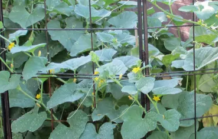We have had a great deal of winter damage this year due to a lack of moisture and warm temperatures interspersed with sharp drops in temperature. So how do you determine the health of your tree?
One of the most important clues in determining the health of your trees is the amount of new growth that tree produces. A healthy tree should have a minimum of 4 to 6 inches of new growth each year. Check branches with the tips in the open and not shaded by the tree itself. Anything less than 4 inches on the majority of branches suggests the tree is under a great deal of stress.
So, how do you tell where the new growth stops? Look for a color change in the stem. New growth is often greener than that from the previous year. There is also often an area of what looks like compressed growth where growth transitions from one year to the next.
Lastly, look at leaf attachment. Leaves are only produced on current seasons’ growth. Therefore, new growth stops where leaves are no longer attached directly to the twig but to side branches. However, pay attention as leaves may be appear to be attached directly to last year’s growth but are actually borne on short spurs. If you look closely, you can tell the difference.
All this clue tells you is whether a tree is under stress or not. It does not tell you what is causing poor growth. This year, the most common cause by far is environmental stress caused by the warm, dry winter.
Stress is cumulative. In other words, trees may not have completely recovered from stressful conditions that occurred several years ago. The accumulating stress may have damaged root systems. In some cases, root systems were damaged enough that those trees may struggle as we enter summer. Though the roots were able to keep up with moisture demands during the cooler spring weather, they may not be able to as temperatures rise. Such trees may suddenly collapse and die or slough off branches they can no longer support. If possible, water to a depth of 12 inches every couple of weeks we do not receive rain in order to avoid further stress. (Ward Upham)
Contributors: Chandler Day, Plant Pathology Graduate Student; Ward Upham, Extension Associate




